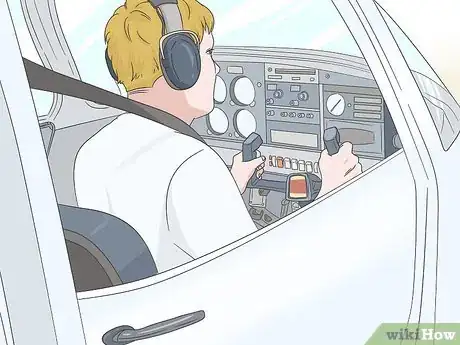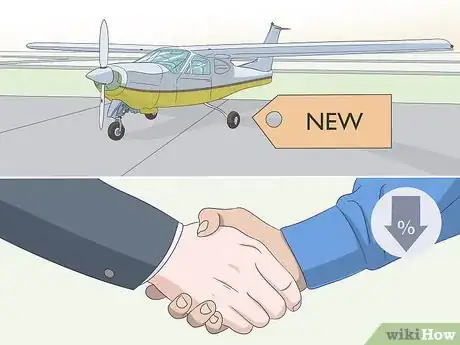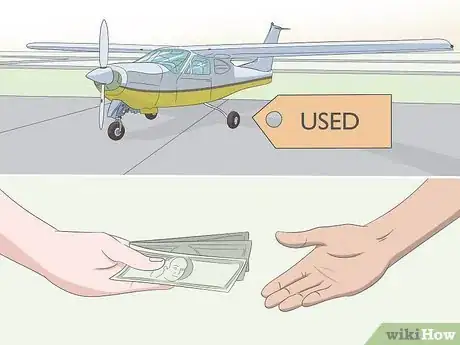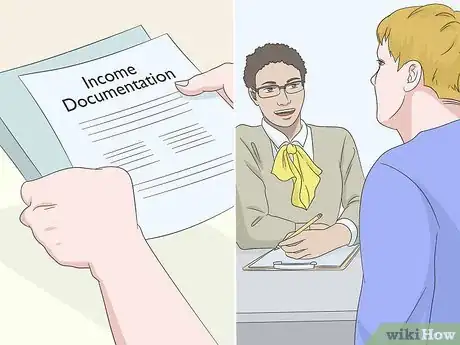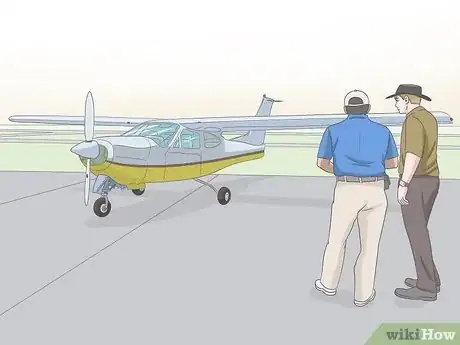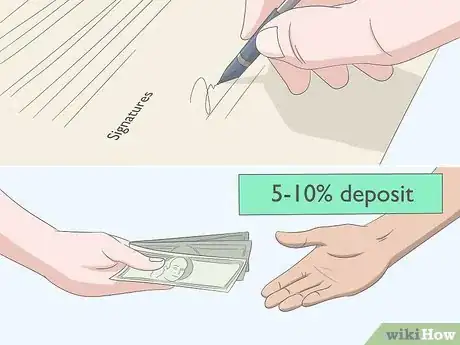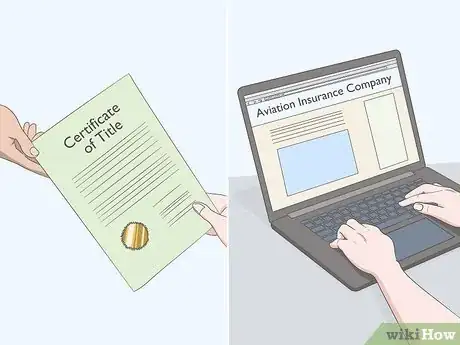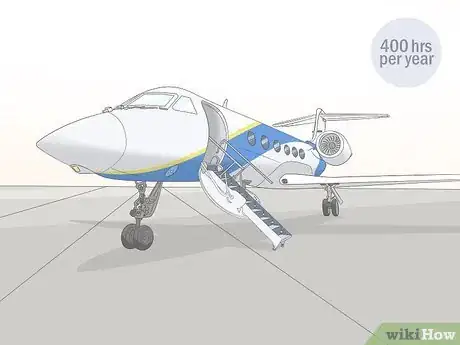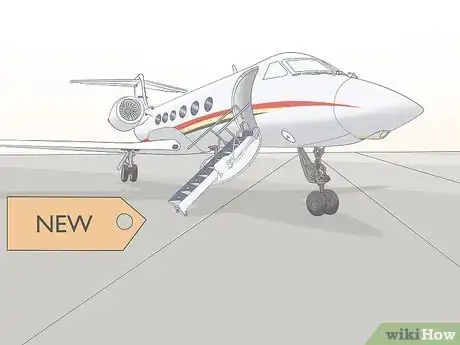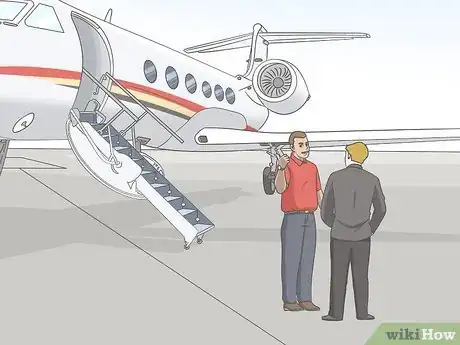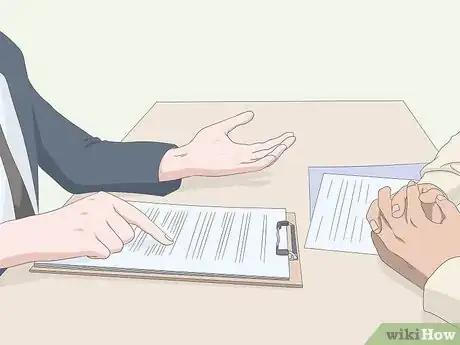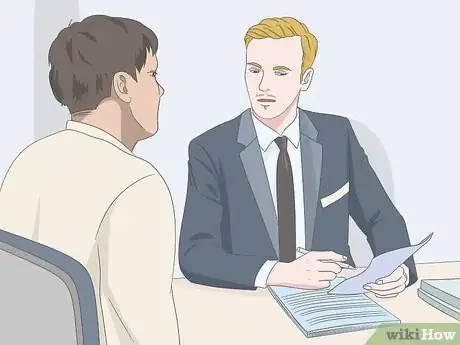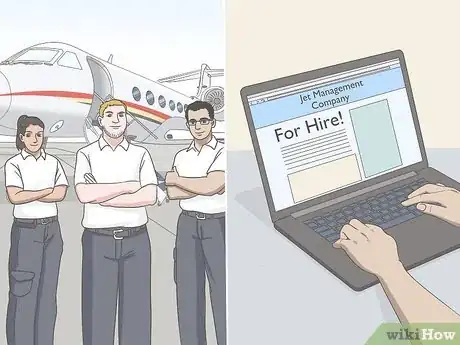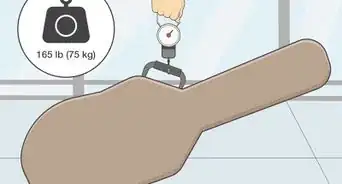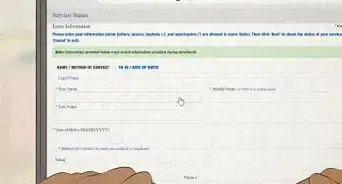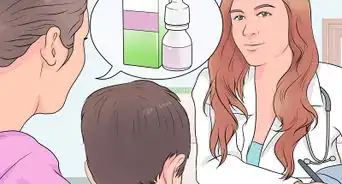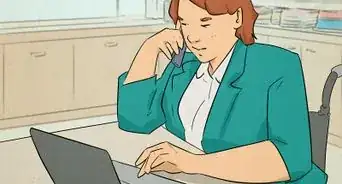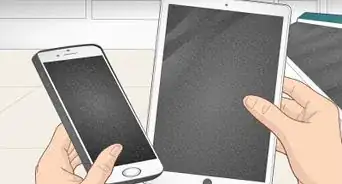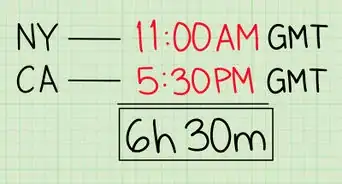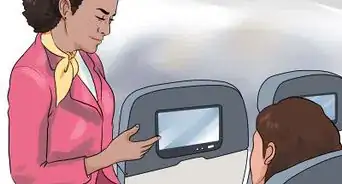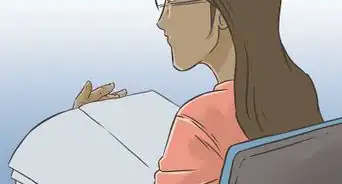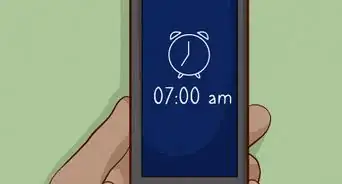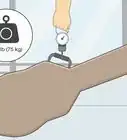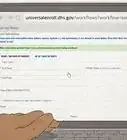This article was co-authored by wikiHow Staff. Our trained team of editors and researchers validate articles for accuracy and comprehensiveness. wikiHow's Content Management Team carefully monitors the work from our editorial staff to ensure that each article is backed by trusted research and meets our high quality standards.
This article has been viewed 9,972 times.
Learn more...
Buying an airplane may seem like a difficult and complicated process, but it’s actually pretty straightforward. If you want to buy a small plane that you can fly yourself, first get your pilot’s license, and then secure a loan or use your savings to purchase a plane. If you plan to buy a private jet, you’ll need to secure financing from a bank or lending group, buy a plane that complies with regulations, hire an attorney to review the paperwork, and use a jet management group to keep your jet maintained and staffed.
Steps
Flying Your Own Plane
-
1Learn how to fly a small airplane before you buy one. Get a private pilot’s license by taking the proper courses and having supervised flight training so you can safely and properly operate a small plane. Learn the controls, how to take off and land a small plane, and how to properly maintain it before you try to purchase one.[1]
- Spend time flying the type of airplane that you plan to buy.
- Have all of your licenses handy when you try to purchase an airplane.
-
2Choose a new airplane for better financing options. Used airplanes are cheaper to buy, but buying a new plane will allow you to pay a lower interest rate and finance it for a longer period of time, which can help make the costs more manageable in the long-term. You also have the security of a warranty on a new plane and the peace of mind knowing that there aren’t any damage or maintenance issues.[2]
- It’s also often easier to qualify for a bank loan to buy a new airplane.
- A longer financing period also means that down payments are often lower for buying a new plane.
Advertisement -
3Select a used airplane for the cheapest option. Buying a used airplane is a much more cost-effective option because it’ll be cheaper than new airplanes, and you may be able to finance the purchase directly with the owner. However, used airplanes often do not have warranties and there may be underlying maintenance issues that you’re unaware of.[3]
- Don’t assume that just because the plane was flown by the previous owners that it’s in good flying condition.
- Older planes will become more expensive to maintain as they age, and replacement parts can become harder to find.
Tip: Test fly or fly along with the owner in the plane before you buy it so you can see how it performs.
-
4Finance the purchase with a loan or with your own savings. If you have enough money saved up to buy the plane outright, then funding the purchase yourself makes sense and you’ll own the plane without having to make any additonal payments. However, most people will need a bank loan to buy an airplane. Gather your income documentation, the cost of the airplane you want to buy, and meet with a lender at your bank to discuss your financing options.[4]
- You can also look up financing companies that specialize and lending for airplane purchases. Look online for financing companies that you can speak to about your options.
- A big consideration when you’re buying an airplane is how you plan to pay for it. Be sure to do your research before you get tied into a long-term loan.
-
5View the airplane and have it inspected by an advisor. See the plane yourself before you try to buy it so you can make sure it’s right for you. Hire an experienced airplane mechanic as an advisor to inspect the plane with you so they can look for any problems or potential liabilities with the plane.[5]
- Your advisor can list out any deficiencies and discrepancies that could change your mind about purchasing the plane or allow you to negotiate a reduced price.
- Hire your own airplane mechanic to inspect the plane to ensure you get an unbiased opinion.
-
6Sign a purchase agreement and pay a deposit. Generally, you need to put down a deposit of between 5-10% of the total cost of the airplane in order to take ownership of it. You will also need to draft and sign a purchase agreement between you and the party you’re buying the airplane from. The agreement covers the terms of the purchase, the cost, refund policies, and any payment plans you agree to.[6]
- Hire an attorney to review your purchase agreement before you sign it to make sure it’s fair and equitable.
- If you got a loan for the airplane purchase, you’ll also have to sign a purchase agreement to list the schedule and amounts of each of your payments.
-
7Transfer the title to your name and insure your airplane. The final step of buying an airplane is to have the title, or the paperwork signifying ownership of the plane, changed from the previous owner’s name or business to your name. You can then purchase insurance for your airplane so it’s covered before you fly it.[7]
- Title transfers are often a part of the purchasing process, but you can find a licensed title transfer company near you by searching online.
- Search online for an insurance company that specializes in airplane insurance.
- Don’t fly your plane until it’s insured to avoid any potential liability issues.
Owning a Private Jet
-
1Purchase a private jet if you fly 400 hours a year. Private jets are expensive to buy and maintain, so doing a cost-benefit analysis can help you decide whether or not you should buy one. Experts suggest that if you fly 350-400 hours a year, then purchasing a jet is a justified expense and will save you money in the long run.[8]
-
2Choose a new plane to meet aviation regulations. A new jet can take a few years to be completed after you order it and may be more expensive than a used jet, but there are many federal and international aviation regulations that have to be met for a jet to land at an airport. Buying a new plane will ensure that it meets the regulations, will pass inspections, and includes warranties to cover any damage that occurs when you own it.[9]
- Used jets are cheaper, but if you have to pay to convert it to meet regulations, it can drive up the costs.
-
3Inspect the jet before you buy it. See the plane yourself, or at least the design of it, and have a licensed inspector check it out to make sure it’s in flying condition and is worth the price you’re paying. An inspection can identify maintenance issues that can affect your decision to purchase the plane as well as the price you pay.[10]
- Use an independent inspector to view the jet you plan to purchase.
-
4Get a loan to finance the purchase. Securing financing from a bank or lending group can help you pay for the jet over the course of 3-5 years with a low-interest rate. Jets will depreciate in value over time, and you may not be able to sell the plane for the original price, so you need to be sure that you can finance the purchase over a long period of time before you commit to a loan.[11]
- Get connected with a lender through your bank so you know they’re reputable.
- Contact a lending group that provides aviation loans
-
5Review the terms and conditions with a lawyer. Purchasing a jet includes a lot of legal language in the form of a purchase agreement, aviation tax laws, insurance, and regulations. You need a lawyer versed in the legal aspects of aviation so you and your plane are protected.[12]
- Search online for aviation lawyers near you or contact a local attorney for a referral to an aviation lawyer.
- Have your lawyer go over all of the paperwork with you so they can explain it before you sign anything.
-
6Hire a jet management company to maintain and staff your plane. Jets have a lot of upkeep and maintenance costs. In addition, you need a crew to fly it. Hiring a management company will take the hassle out of your hands so you can focus on enjoying your trips.[13]
- Management companies have design options you can choose to customize the amenities and interior of your jet.
- Search online for jet management companies or ask your attorney to recommend one.
Tip: Your management company can also charter your plane when you aren’t using it so it can turn a profit to help pay for itself.
References
- ↑ https://www.faa.gov/regulations_policies/handbooks_manuals/aviation/airplane_handbook/media/04_afh_ch2.pdf
- ↑ https://www.planeandpilotmag.com/article/top-20-tips-for-buying-an-airplane/#.Xa2JK-hKgdU
- ↑ https://www.planeandpilotmag.com/article/top-20-tips-for-buying-an-airplane/#.Xa2JK-hKgdU
- ↑ https://www.sherpareport.com/aircraft/buying-aircraft.html
- ↑ https://www.sherpareport.com/aircraft/buying-aircraft.html
- ↑ https://www.sherpareport.com/aircraft/buying-aircraft.html
- ↑ https://www.sherpareport.com/aircraft/buying-aircraft.html
- ↑ https://www.businessinsider.com/how-to-buy-a-private-jet-2009-9#do-a-cost-benefit-analysis-1
- ↑ https://www.businessinsider.com/how-to-buy-a-private-jet-2009-9#do-a-cost-benefit-analysis-1
